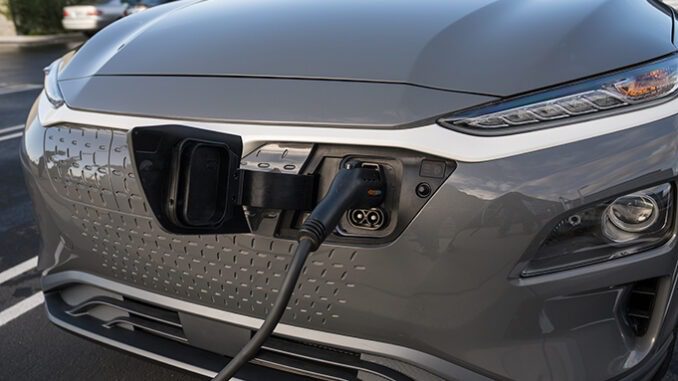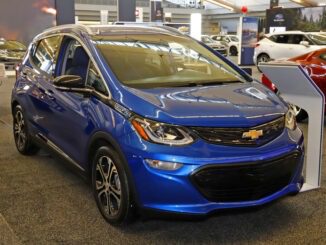
With prices spiking at the gasoline pump, a new modern equivalent of Marie Antoinette’s (supposed) cake gaffe has emerged: “Let them drive Teslas.”
With gasoline topping $5 per gallon across much of the country, people ranging from President Joe Biden to funnyman Stephen Colbert have suggested we’d all be saving money if only we had had the foresight to purchase an electric car. Obnoxious though it may be when people are being squeezed, they present an interesting question: All costs taken into account, which is the more affordable choice, an electric vehicle (EV) or a standard internal combustion engine (ICEV) vehicle?
Conventional wisdom holds that ICE cars have the upfront cost advantage but that EVs make up for the higher price with lower fuel costs over time. It’s also widely held that EVs, with their simpler systems, have lower maintenance costs. What does the evidence tell us when we take everything into account?
Fortunately, recent analyses from Car and Driver, Consumer Reports and the Massachusetts Institute of Technology’s Carbon Counter offer us some insight on what they call “cost of ownership,” which tallies costs including purchase price, fuel costs and maintenance costs.
On purchase price, EVs lose. Car and Driver makes the most cogent case here, showing that when we look at nearly identical EVs and ICEVs, electric cars are far more expensive. Car and Driver examined the Mini Cooper Hardtop and the Mini Electric, as well as the Hyundai Kona and the Hyundai Kona Electric, the only two models in the U.S. market that are available with both powertrains. The Mini Hardtop retails for $24,250 while the Mini Electric retails for $30,750 — a 27% jump. The figures for the Kona are even more startling. The standard version costs $21,440; the electric version costs $38,330 — about 80% more.
That huge difference means that even with the federal subsidy for buyers of the electric Kona, they’re still paying a lot more than they would for the standard version of the same car.
Consumer Reports has the most straightforward presentation on fuel costs. In this category, EVs come out on top. EVs are cheaper to charge than ICEVs are to fill up at the pump on a per-mile basis. With electricity rates tightly regulated, it is indeed the case that EVs win in this category, particularly when gasoline prices spike. Attempting to capture a realistic estimate of “at-home” charges and the more expensive “on-the-go” charges at public fast chargers, Consumer Reports pegs fuel savings at about $800 per year when choosing an EV over an ICEV.
On maintenance costs, EVs win as well. No engine repairs and no oil changes mean savings.
With the Mini Electric, an owner can expect maintenance over a three-year period to be about $900 cheaper than the standard Mini. For owners of the electric Kona, the savings are a smidge of $1,000 over a three-year period.
At this point, the results are mixed. By choosing the Mini Electric over the standard Mini, a buyer can basically come out even over three years when they factor in the $7,500 federal tax break. Assuming the current high gasoline prices, the Mini Electric owner probably comes out on top over a full ownership period. With the Kona, the ICEV still wins, due to the massive upfront cost gap.
But we still need to add a key point: most people who choose EVs — including Stephen Colbert — aren’t choosing Mini or Hyundai; they’re choosing Tesla. Excluding hybrids, the $37,000 Tesla Model 3 accounted for over 60% of electric vehicles sold in 2019. The 2022 model has a manufacturer’s suggested retail price of more than $48,000.
According to MIT’s Carbon Counter, the Tesla Model 3 Standard Range Plus costs more than $400 per month over the course of a standard ownership period when accounting for the purchase price, fuel and maintenance. The Model 3 Long Range costs more than $500 per month and the Model 3 Performance costs almost $600 per month.
Among the many common models of ICEVs that cost less per month than the most affordable Tesla are the Honda CR-V, the Volkswagen Passat, the Chevy Trailblazer, the Honda Civic, the Nissan Sentra and the Volkswagen Jetta. The mid-tier Tesla Model 3 Long Range is costlier per month than the Ford F150, the Jeep Wrangler, the Audi Q3, the Dodge Durango, and the Dodge Grand Caravan. At the higher end of the EV market, the Tesla Model 3 Performance is costlier than the Lexus ES, the BMW X1, the Cadillac CT5, and the Mercedes-Benz GLB250.
Bottom line? Smug as they may feel, EV drivers aren’t really saving money. While fuel and maintenance are slightly more affordable when driving an EV, that doesn’t make up for the gigantic difference in upfront costs.
Jordan McGillis is deputy director of policy at the Institute for Energy Research in Washington, D.C.


